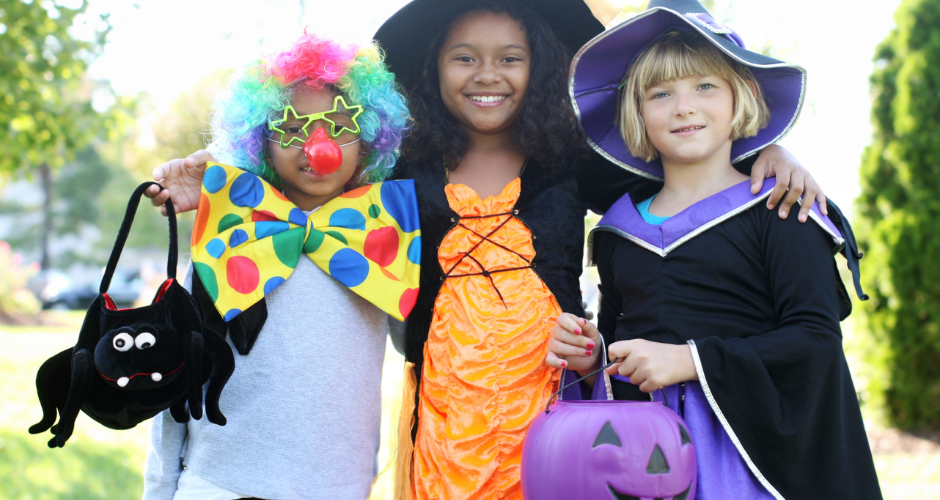Halloween is for ghosts and goblins, but it shouldn’t include boo-boos. It’s important to remember the potential hazards this night can present.
According to federal highway safety data, children are three times more likely to be fatally injured by a car on Halloween, and the risk grows to 10 times for kids ages 4 to 8.
Halloween Safety Tips
Safe Costume Tips
Parental supervision and keeping these safety tips in mind can help ensure your Halloween is fun with no injuries.
Halloween costumes
- If possible, dress your child in light colors. Add reflective tape to costumes and bags for extra visibility.
- Avoid dressing your child in a mask, which can obstruct your child’s vision. Use face paint or makeup instead.
- If your child is wearing a hat, make sure it fits properly so it doesn’t slip down and obstruct your child’s vision.
- Check labels on costumes, wigs and accessories for flame resistance.
- Have your child carry a flashlight or glowstick.
- Dress your child in a size appropriate costume to avoid trips and falls.
- Avoid the use of decorative contact lenses, which can cause serious eye infections and eye disorders. It is best to have an eye examination and prescription from an eye care professional.
Safe Trick-or-Treating Tips
Trick-or-treating
- Trick-or-treat in a group and stay together.
- Have your child carry a cell phone for emergencies and teach him or her how to call 9-1-1.
- Only go to homes with a porch light on.
- Advise your child to never go into a home or car while trick-or-treating.
- Never cut across yards or use alleys.
- Attend a community celebration during the day or indoors.
Safe Walking
- An adult should always accompany young children.
- Cross the street at corners and use traffic signals and crosswalks. Always look left, right and then left again and keep watching for cars as you cross.
- Remind your child to keep their attention off electronic devices and hold their head up when walking.
- Watch for cars turning or backing up. Never dart out into the street or cross between parked cars.
Pumpking Carving Safety
Pumpkin tips
- Always leave the pumpkin carving to adults. Have your child do the drawing. Use small pumpkin saws rather than large cutting knives, which can be dangerous and cause injury.
- Light your pumpkin with a flashlight or glow stick rather than a candle to prevent fire hazards.
- Keep pumpkins out of the path of trick-or-treaters.
Pumpkins for a Cause
Paint your pumpkin for a cause
A recent trend is to use colored pumpkins on your doorstep to signify certain causes.
- A teal pumpkin means you have non-food treats available for trick-or-treaters with food allergies or other conditions.
- A child carrying a blue pumpkin bucket to collect candy is a sign the child may have autism and may not do things like make eye contact or say thank you.
- A purple pumpkin is part of the Epilepsy Foundation’s goal to raise awareness and funds to support epilepsy research.
With some extra attention, you can enjoy the spooky season without unwanted boo-boos. Have a fun and safe Halloween by using commonsense and reviewing these safety tips with your child before trick-or-treating.
Camille Settelmeyer, DNP, FNP-C
Family Medicine - Primary Care Clinic





